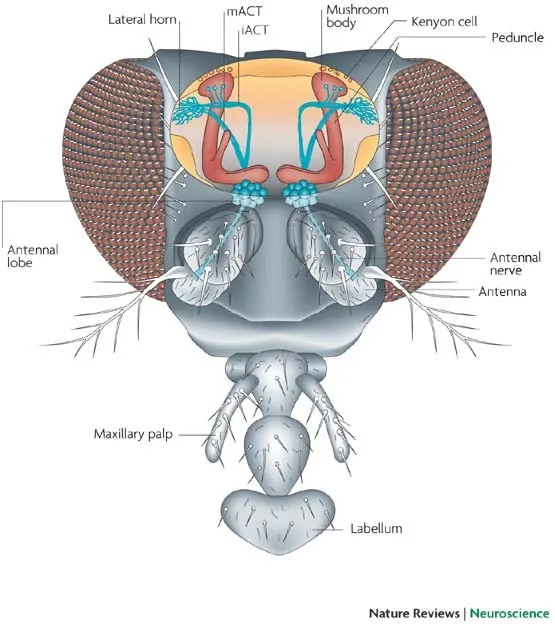Carpenter bees are known for their ability to identify ideal nesting sites using complex sensory cues, particularly through their olfactory—or scent-based—memory. This article explores the latest research on how olfactory memory in carpenter bees impacts their nesting choices, discussing how scent-based cues and memories can influence bee behavior. This insight opens doors to developing effective baits that mimic previous nesting conditions, helping homeowners and conservationists manage carpenter bee populations.
Understanding Olfactory Memory in Carpenter Bees
1.1 What Is Olfactory Memory?
Olfactory memory refers to the ability to store and recall smells or scents, and it’s particularly advanced in many insects, including bees. In carpenter bees, this sensory memory aids them in recognizing and returning to familiar nesting areas, or areas with pheromones or scents that mimic their species.
1.2 How Carpenter Bees Use Scent in Nesting Selection
Carpenter bees utilize a variety of sensory cues, but scent plays a pivotal role, helping them identify safe and suitable environments for nesting. Studies have found that carpenter bees tend to revisit previously used nests, guided by olfactory cues from prior seasons. This is likely due to their ability to memorize the scent signature of a location, which serves as a marker for an ideal habitat.
1.3 Psychological Perspective on Olfactory Memory and Behavioral Influence
From a psychological perspective, the brain’s encoding and recall of olfactory information in bees influence their foraging and nesting habits. Olfactory memory can drive bees to revisit certain sites due to comfort, safety, or previously perceived resources, highlighting a behavioral pattern that humans might exploit to create targeted baits.
The Sensory Pathways in Carpenter Bees
2.1 How Carpenter Bees Process Smell: An Overview of Sensory Pathways
Olfactory pathways in carpenter bees start with their antennae, which detect scents and pheromones. These signals travel to their brain’s antennal lobe, where they undergo processing. The pathways in these lobe areas have similarities with those in honeybees, offering a basis for understanding how memories form and affect behavior in carpenter bees.
2.2 Studies on Bee Brain Structure and Olfactory Processing
Recent studies reveal that bee brain structures are equipped to process complex olfactory signals. The mushroom bodies, a significant part of the insect brain, are heavily involved in learning and memory. Research shows that scent-based experiences can cause neural changes in these mushroom bodies, creating long-term olfactory memories. Understanding these pathways can guide bait developers in mimicking scents that carpenter bees find irresistible.
Behavioral Influence of Olfactory Memory on Nesting Sites
3.1 Influence of Familiar Scents on Nest Selection
Carpenter bees are influenced by familiar smells when selecting nesting sites, with studies indicating that bees exhibit a preference for returning to sites that retain a particular scent signature. This section could provide insights into specific environmental smells—such as wood types and pheromones—that carpenter bees remember and associate with ideal nesting conditions.
3.2 Case Study: How Olfactory Memory Impacts Nesting Fidelity in Carpenter Bees
Examining case studies in bee species, such as how honeybees and carpenter bees exhibit site fidelity due to scent cues, can demonstrate the impact of olfactory memory on nesting behavior. Data from these studies may reveal specific scents or chemical signatures that can be replicated to attract carpenter bees.
3.3 Cross-Species Insights: Olfactory Memory in Other Bees and Its Implications
Research on honeybees and bumblebees provides additional insights into the role of olfactory memory. These studies highlight how bees associate certain floral scents with resource-rich locations, which could be applied to carpenter bee bait design by imitating scents from wood or floral sources they naturally prefer.
Potential for Bait Development Using Scent-Based Memory
4.1 Mimicking Familiar Nesting Conditions through Scent-Based Baits
Understanding that carpenter bees return to familiar scents can drive innovation in baits that mimic natural scents from previous nesting sites. By using specific pheromones or synthetic compounds that replicate these smells, bait can be designed to lure bees effectively.
4.2 Experimental Approaches: Pheromone-Based Baits and Scent Replication
Experimentation with pheromone-based baits is crucial for bait development. This section could explore synthetic pheromones and how they might replicate carpenter bee-friendly environments. Studies on pheromones used for other bees may provide insight into effective scents for carpenter bees.
4.3 Case Study: Early Results from Scent-Based Traps and Baits
Any preliminary results from trials involving scent-based traps for carpenter bees will be highlighted here. Successes, challenges, and future directions in scent-mimicking bait design can give readers a clear understanding of the potential for olfactory-based bait in managing carpenter bee populations.
Practical Applications and Future Research
5.1 Designing Carpenter Bee Baits: Practical Insights
Combining olfactory cues with specific pheromones, this section will provide actionable insights on creating bait. This might involve using synthetic pheromones that replicate the scents of carpenter bee nests, wood materials they prefer, or other olfactory cues.
5.2 Future Research on Olfactory Pathways and Memory in Carpenter Bees
Future research opportunities could focus on better understanding the neural pathways in carpenter bees, particularly their scent-based memory systems. Further insights may enable the development of even more effective baits and traps.
Conclusion
In-depth research into carpenter bees’ olfactory memory presents significant potential for controlling carpenter bee populations. By mimicking scents associated with preferred nesting conditions, homeowners and conservationists can develop effective traps or baits. As our understanding of bee psychology and sensory processing grows, the future holds promise for new methods that align with bees’ natural behaviors.





